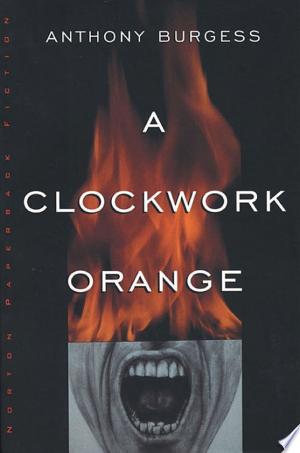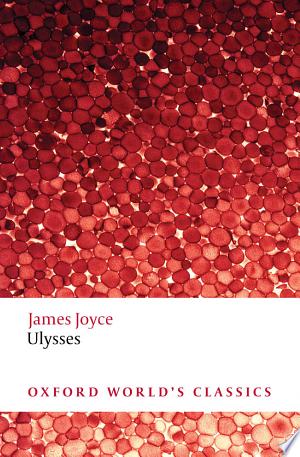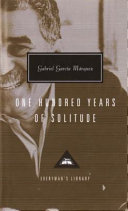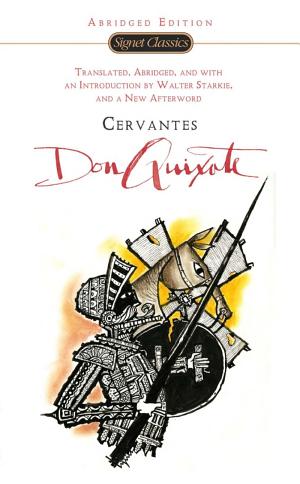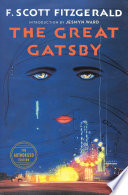"A Clockwork Orange" Summary
classics | 352 pages | Published in 2013
Fully restored edition of Anthony Burgess' original text of A Clockwork Orange, with a glossary of the teen slang 'Nadsat', explanatory notes, pages from the original typescript, interviews, articles and reviews Edited by Andrew Biswell With a Foreword by Martin Amis 'It is a horrorshow story ...' Fifteen-year-old Alex likes lashings of ultraviolence. He and his gang of friends rob, kill and rape their way through a nightmarish future, until the State puts a stop to his riotous excesses. But what will his re-education mean? A dystopian horror, a black comedy, an exploration of choice, A Clockwork Orange is also a work of exuberant invention which created a new language for its characters. This critical edition restores the text of the novel as Anthony Burgess originally wrote it, and includes a glossary of the teen slang 'Nadsat', explanatory notes, pages from the original typescript, interviews, articles and reviews, shedding light on the enduring fascination of the novel's 'sweet and juicy criminality'. Anthony Burgess was born in Manchester in 1917 and educated at Xaverian College and Manchester University. He spent six years in the British Army before becoming a schoolmaster and colonial education officer in Malaya and Brunei. After the success of his Malayan Trilogy, he became a full-time writer in 1959. His books have been published all over the world, and they include The Complete Enderby, Nothing Like the Sun, Napoleon Symphony, Tremor of Intent, Earthly Powers and A Dead Man in Deptford. Anthony Burgess died in London in 1993. Andrew Biswell is the Professor of Modern Literature at Manchester Metropolitan University and the Director of the International Anthony Burgess Foundation. His publications include a biography, The Real Life of Anthony Burgess, which won the Portico Prize in 2006. He is currently editing the letters and short stories of Anthony Burgess.
| ISBN_13: | 9780393343045 |
| ISBN_10: | 0393343049 |
Estimated read time: 6 min read
One Sentence Summary
A young delinquent undergoes a controversial behavioral treatment in a dystopian society.
Table of Contents
Introduction
In Anthony Burgess's dystopian novel "A Clockwork Orange," readers are transported to a dark future society where violence and crime prevail. The novel, set in a futuristic city in England, explores themes of free will, morality, and the consequences of violence and oppression.
Brief Synopsis
Set in a futuristic city known as "London," the story follows the protagonist, Alex, a young man who leads a gang of violent delinquents. The city is plagued by rampant crime and social unrest, with a corrupt government struggling to maintain control. Alex and his droogs (gang members) commit various acts of violence, from robbery to rape, which they call "ultra-violence."
The setting is crucial to the story, as the futuristic society reflects the decay and moral degradation of the world. Technology has advanced, yet social order and morality have disintegrated. The government attempts to restore control through a controversial psychological technique known as the Ludovico Technique.
Main Characters
| Character | Description |
|---|---|
| Alex | The novel's protagonist, a violent and charismatic youth. |
| Dim | One of Alex's droogs, known for his physical strength. |
| Georgie | Another member of Alex's gang, motivated by power. |
| Pete | A droog who later turns against Alex and his violent ways. |
Summary of Plot Points
- Introduction of Alex and Gang (Chapter 1): The novel begins by introducing Alex and his droogs, describing their violent escapades and their fascination with music, particularly classical composer Ludwig van Beethoven.
- The Attack on a Homeowner (Chapter 2): Alex and his gang break into an elderly man's home, brutally assaulting him and sexually violating his wife. This event marks a turning point in the novel, foreshadowing the consequences to come.
- Alex's Arrest and Imprisonment (Chapter 3): Alex is betrayed by his own gang members and caught by the police after a botched robbery. He is sentenced to prison, where he learns about the Ludovico Technique.
- The Ludovico Technique (Chapter 4): Alex becomes a test subject for the controversial Ludovico Technique, a form of aversion therapy aimed at eradicating his violent tendencies. The technique involves forcing him to witness violent acts while under the influence of a nauseating medication.
- Alex's Transformation and Release (Chapter 5): The Ludovico Technique appears to have successfully reformed Alex, making him feel physically ill at the thought of violence. He is released from prison, but his newfound aversion to violence puts him at risk in the violent world outside.
- Betrayal and Revenge (Chapter 6): Alex reconnects with his former droog Dim, who has joined the police force. Dim arranges for Alex to be attacked by another gang, as revenge for Alex's previous mistreatment of him. This event prompts Alex to question the authenticity of his reformation.
- Alex's Encounter with His Former Victims (Chapter 7): Alex accidentally meets some of his previous victims, revealing the lasting trauma caused by his actions. This encounter further challenges his belief in the effectiveness of the Ludovico Technique.
- Alex's Solution and the Final Chapter (Chapter 8): Desperate to regain his freedom, Alex contemplates suicide. However, he realizes that he can manipulate public opinion to his advantage by seemingly embracing the government's ideology. The novel concludes with Alex contemplating his future and the uncertainty of his identity.
Main Events
- Alex's gang commits acts of "ultra-violence," including assaulting a homeowner and his wife.
- Alex's arrest and imprisonment, followed by his participation in the Ludovico Technique.
- Alex's release from prison and his struggles to adapt to his reformed self in a violent society.
- Betrayal by Dim and subsequent revenge from another gang.
- Alex's encounter with his former victims, forcing him to confront the impact of his actions.
- Alex's manipulation of public opinion and his contemplation of his uncertain future.
Themes and Insights
- The Nature of Free Will: "A Clockwork Orange" explores the question of whether true moral agency can be achieved through external conditioning. The Ludovico Technique raises ethical concerns regarding the suppression of free will and the potential harm caused by forcibly altering behavior.
- The Dangers of a Dystopian Society: The novel serves as a cautionary tale about the potential consequences of a society lacking in morality, personal freedom, and individual rights. The government's attempts to control and manipulate its citizens result in a dehumanized society.
- The Power of Music: Music, particularly the works of Beethoven, plays a crucial role in the novel, serving as a symbol of art's transformative power and the potential for redemption. Alex's love for classical music contrasts with his violent behavior and reflects his complex and conflicted nature.
- The Paradox of Identity: Alex's journey raises questions about the authenticity of identity and the conflict between self-expression and societal expectations. The Ludovico Technique strips Alex of his ability to make choices, leading him to question his true nature and the extent to which he can claim agency over his actions.
Reader's Takeaway
"A Clockwork Orange" is a thought-provoking novel that challenges readers to examine the delicate balance between free will, social control, and the consequences of violence. Through the eyes of the charismatic yet morally ambiguous protagonist, Anthony Burgess presents a dystopian future that forces readers to question the nature of humanity and the role of choice in shaping individual identity.
Conclusion
Anthony Burgess's "A Clockwork Orange" transports readers to a dark and unsettling dystopian society where violence reigns and morality is eroded. The novel delves into complex themes of free will, societal control, and the power of art. Through the character of Alex and his journey, Burgess challenges readers to confront the consequences of violence and the ethical implications of manipulating human behavior. "A Clockwork Orange" remains a powerful, thought-provoking novel that continues to resonate with readers and provoke discussions about the nature of humanity.
A Clockwork Orange FAQ
What is the genre of 'A Clockwork Orange'?
Who is the author of 'A Clockwork Orange'?
What is the main theme of 'A Clockwork Orange'?
Is 'A Clockwork Orange' suitable for all readers?
What is the significance of the title 'A Clockwork Orange'?

